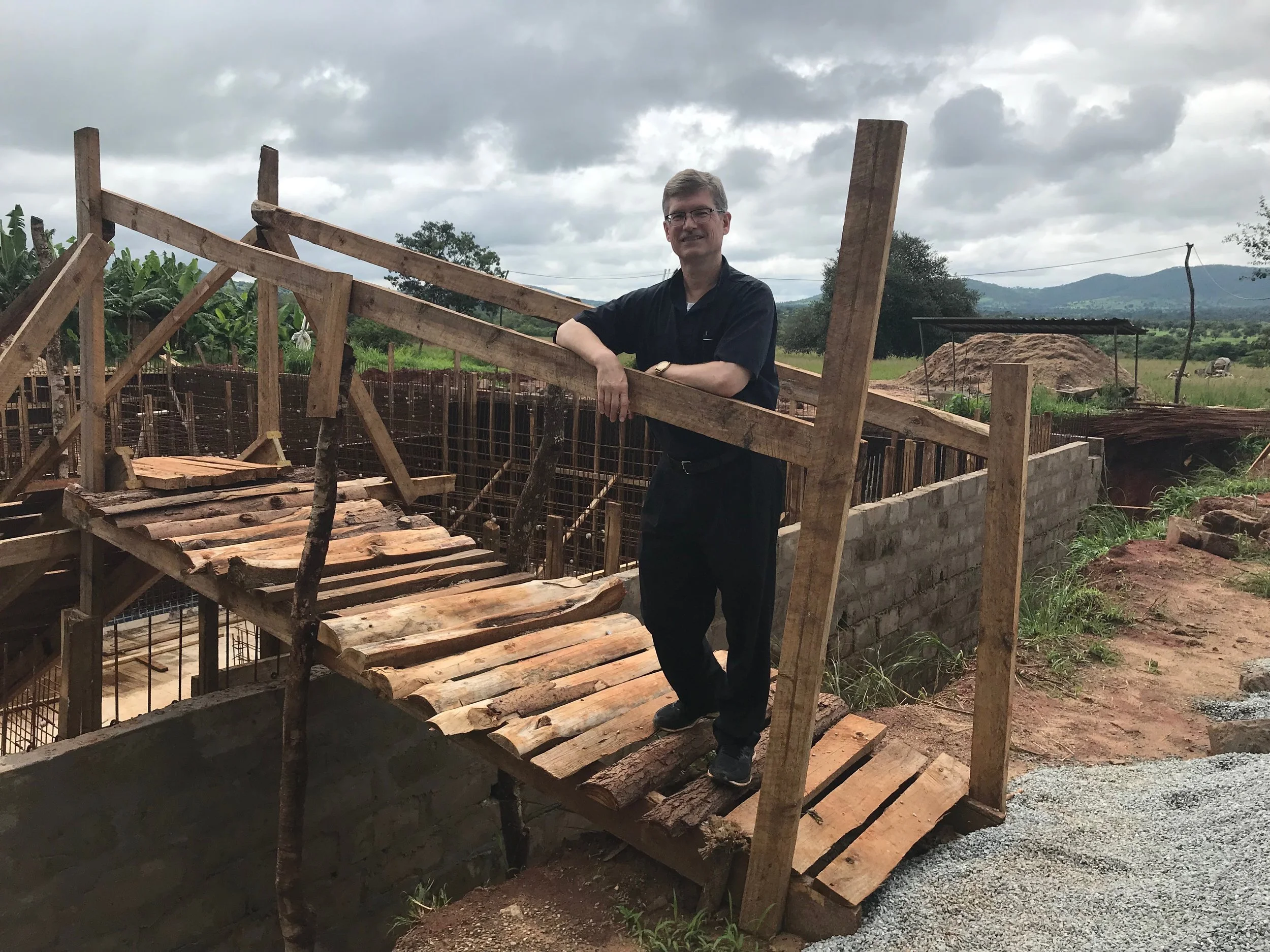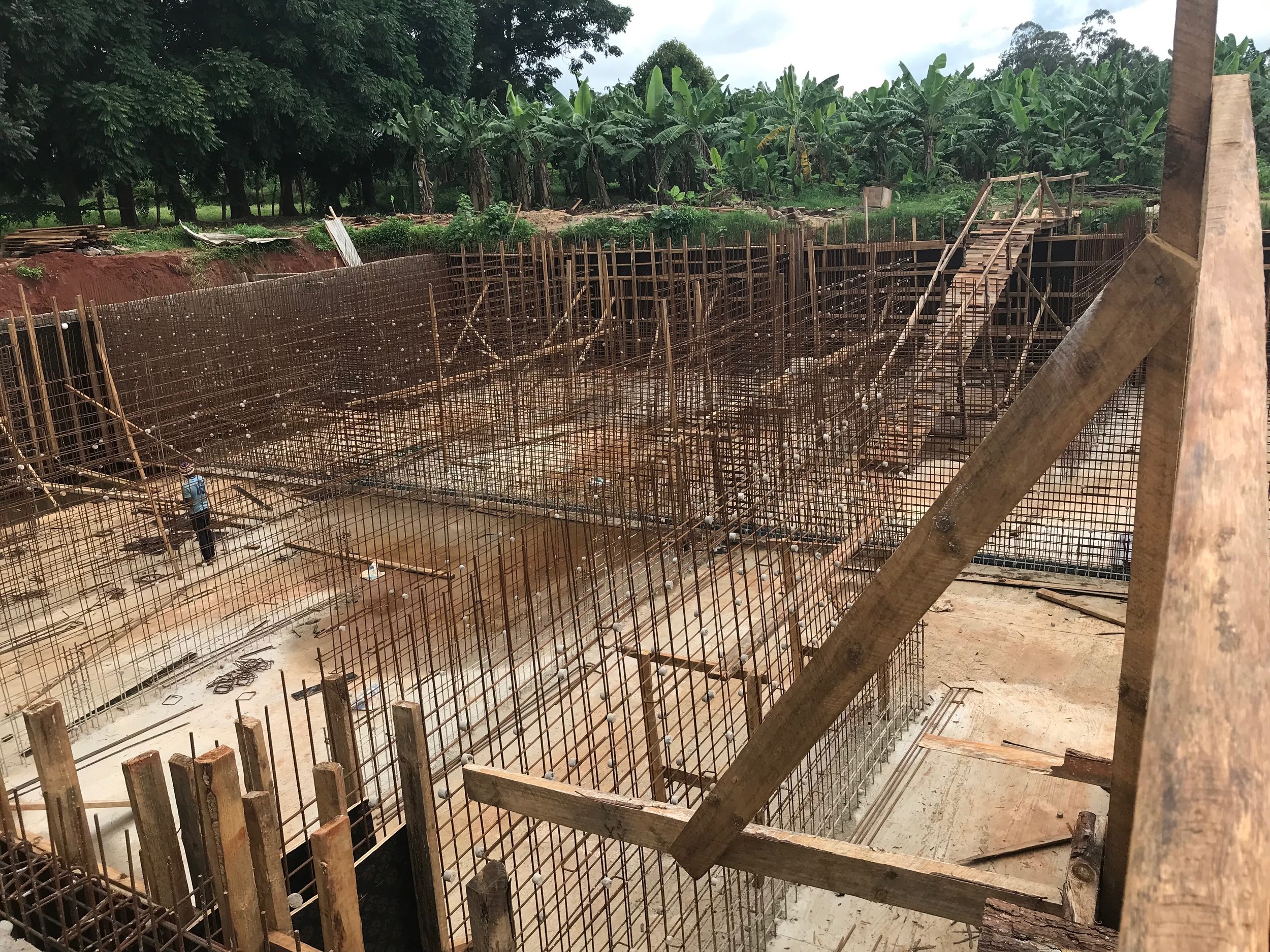Benedictine Water Project
by: Fr. Paul Kasun, OSB
President Magafuli of Tanzania, a country in East Africa, leads the efforts to industrialize his country. Many efforts go into the construction of vital infrastructure projects like water, electricity, plumbing, and roads. The Benedictine Missionaries participate in the building up of Tanzania through our missionary projects. For example, we have one of the most successful hospitals in southern Tanzania, as well as founding K-12 schools and a major seminary.
All of these projects require reliable sources of water, especially during the dry season. With increased demand for water at our monastery in Peramiho, which includes their many projects, our Schuyler donors came forward. At this time, a two-million-liter water tank is under construction. This tank will provide water in those critical moments during the dry season.
This will be an incredible improvement to the current water supply for our monastery, hospital, schools, vocational training workshops, agricultural projects, as well as the work of the Benedictine Missionary sisters on the same property. Water is plentiful in the wet season, but scarce in the dry season, especially towards the end of the six-month period.
Hills and mountains characterize the geography of south and central Tanzania. Within these mountains, water gushes from springs that provide water for the population. A few decades ago, the monastery built a series of pipes and tanks to get the water, several miles away, to the monastery. Three, above-ground storage tanks were built along the way to store the water and provide gravitational pull to move the water along its several mile trek.
However, the first stop for the water was an underground storage tank. It is located at the current building site and it is too small. As the monastery projects grew, so did its need for water. For instance, the hospital has grown from a small clinic to a major, regional hospital which serves people from all over central and southern Tanzania. It is a recognized throughout the country for its quality health care and its need for water grew.
In Tanzania, the 2017 GDP per capita/person was $3,300. The country’s current leadership is organizing its population to move from subsistence agricultural work to a higher stage of agricultural production. The aim is to free up more people to work in the budding industrial production and manufacturing, as most people live in the rural areas.
There is a great need to build its infrastructure. In 2013, only 4% of the rural areas had electricity, but it is near 10% today. Also, in these areas, only 46% of the population had access to improved drinking water (2015). This means that our monasteries play a critical role in the development of Tanzania. Catholics, Protestants, Muslims, and the whole population are grateful for our work, and they know that you, our donors, help make it possible.
The water project continues our vision for growth. It is part of the overall, national goal to harvest more water during the wet season in order to bring hope and water security to Tanzanians. Our work is a model for others.
Because of other work for our Benedictine Congregation that brought me to Tanzania, I also learned about our water project in Peramiho. Therefore, I am excited to show you the latest pictures on the construction of the water tank. It will be one of the largest in the region. In February, I took the pictures.











